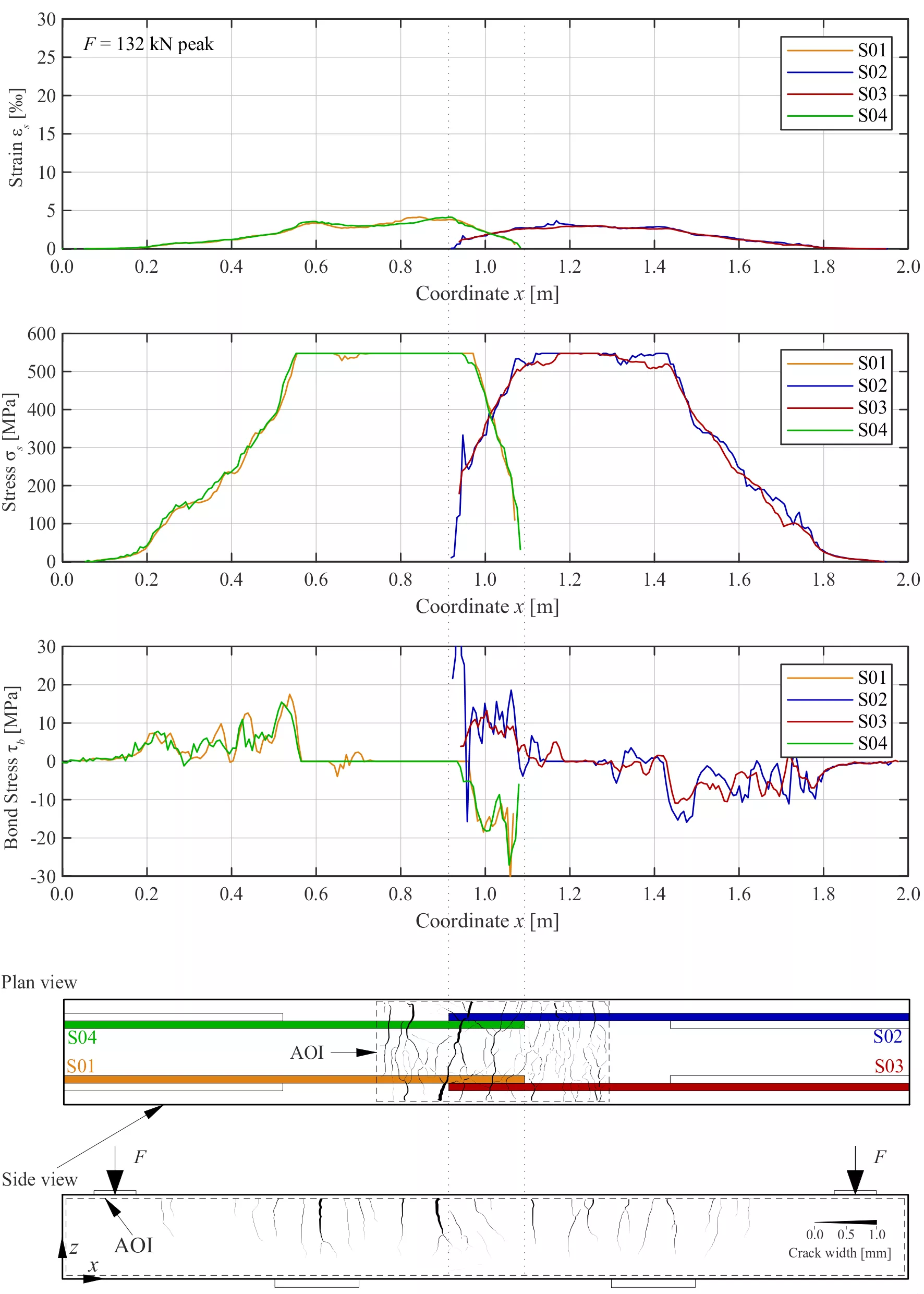Global and local analysis of UHPFRC lap splices with refined distributed optical measurements
Author: Joas Wyss
Language: English
Abstract
Ultra-high performance fibre reinforced concrete (UHPFRC) is a high strength cementitious material containing steel fibres. Its high bond strength allows reducing the lap splice length of reinforcement in UHPFRC to 6-15 db, where db is the diameter of the reinforcing bar, depending on the applied code provision. Hence, lap splices in UHPFRC are three to eight times shorter than in normal strength concrete (NSC). Consequently, UHPFRC lap splices have a high potential to reduce the connection length of prefabricated NSC elements. This type of application has recently become popular in accelerated bridge construction in the USA.
Most previous research on UHPFRC lap splices focused on the global mechanical behaviour of the lap splice. This thesis analyses the local behaviour in the lap splice in terms of stress transfer between the spliced reinforcing bars and the implications of the splice on the global load-deformation behaviour using innovative measurement techniques applied to four flexural members (three using UHPFRC, of which two had spliced bars, and one using NSC without steel fibres). To this end, four-point bending tests were conducted employing specimens instrumented with distributed fibre optic sensing (DFOS) and digital image correlation (DIC) measurements. The DFOS allowed determining the strain, stress and bond stress distribution, while the DIC allowed measuring the load-deformation behaviour and the crack kinematics.
The experiments showed that the reinforcement yielded even with a lap splice length of 10 db. In this case, the complete lap splice length was exploited to transfer stresses from one reinforcing bar to the other. The governing crack opened in the lap splice. With a lap splice length of 20 db, not the whole lap splice length was necessary for the stress transfer. Both members with lap splices had the same ultimate strength and load-deformation behaviour. However, the specimens incorporating a lap splice showed a slightly increased stiffness and an approximately 5% lower ultimate load than the unspliced one. The increased stiffness is due to a higher reinforcement ratio in the lap splice and the lower ultimate load is either due to the increased stiffness or due to the larger crack width at the ultimate load. Comparing UHPFRC to NSC without fibres, a reduced crack width until the ultimate load and a reduced crack spacing was observed for the specimen of UHPFRC due to the steel fibres bridging the cracks. After the onset of yielding in the reinforcement, the loading was increased for the specimen of UHPFRC. In the weakest section, more and more fibres changed from the activation to the pull-out phase, triggering deformation localisation.
To study the global and local behaviour of UHPFRC lap splices, the fibre stress distribution at the crack for a cross-sectional analysis of a bending member was determined. Until the ultimate load, a triangular distribution was applied. The commonly assumed rectangular stress distribution actually led to unsafe results in this case.
The developed analytical model predicted the load-deformation behaviour of the non-spliced specimens relatively well. The model could be further expanded to include the lap splice. Further research should go into better understanding of bond between UHPFRC and the reinforcing bars in order to do so. The contribution of the fibres to the bond strength has not yet been described in a mechanically consistent way.

